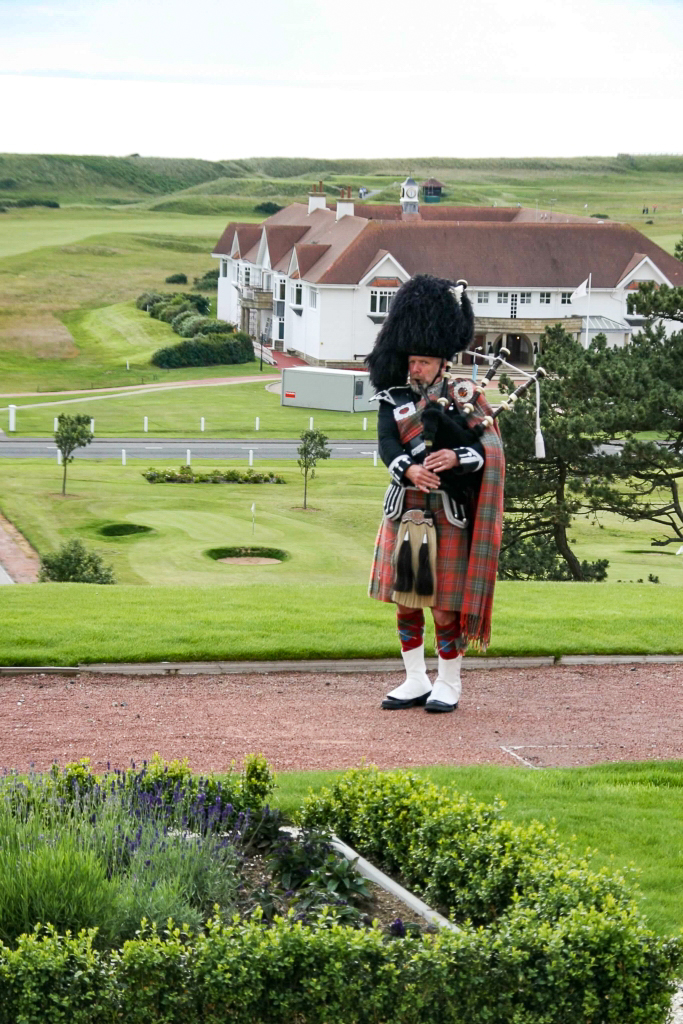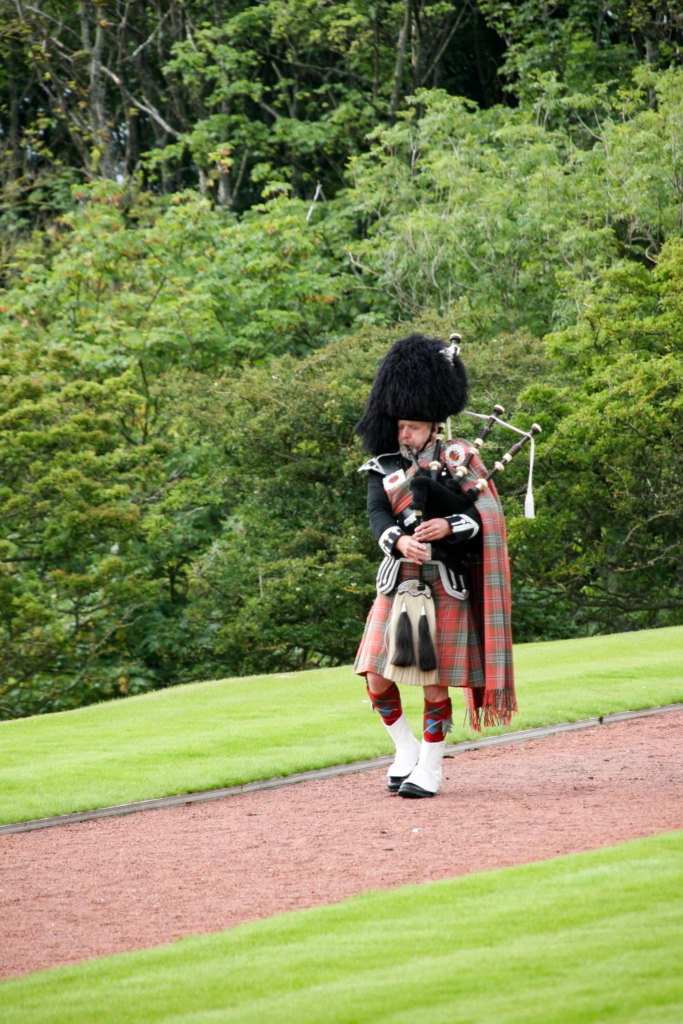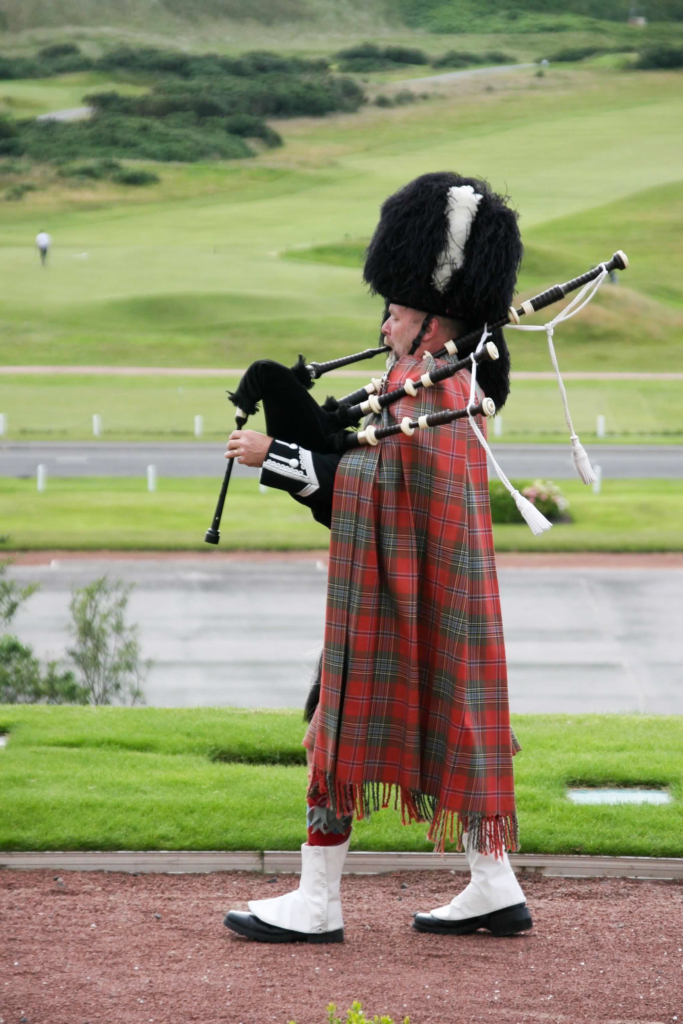The late June cerulean sky greeted us at sunrise at the Trump Turnberry Resort. It would be a wonderful day for golf on the Ailsa course. After breakfast we made our way to tee box number 1. I anxiously awaited the beautiful scenery ahead while the golfers in our group looked forward to being able to brag about their low scoring round on the course that has been home to four Open Championships and is ranked by Golf Monthly as the number one golf course in the UK and Ireland.
With great anticipation we set off on this beautiful coastal links course positioned on the Ayrshire coastline. As we wound our way around the course, over holes with memorable moments in golf including The Duel in the Sun between Tom Watson and Jack Nicklaus in 1977, it was thrilling to realize that we were walking in the footsteps of the game’s giants. But all too soon, the 18-holes were played and we made our way back to the hotel to prepare for the evening.
Just before sundown we met up on the terrace of the Trump Turnberry bar. Snagging a teak table we settled in to enjoy sunset over the Ailsa course with Ailsa Craig island floating in the far distance. The Turnberry Lighthouse, built on what is thought to be the moat of Turnberry Castle, is thought to be the birthplace of Robert the Bruce (who ruled Scotland 1306-1329 and was responsible for its first independence from England), released its first beam of light in 1878.
The Turnberry bar was proud to offer a tasting flight of one of Scotland’s proudest exports, Scotch whisky! First recorded on the Exchequer Rolls (i.e., comptroller) of Scotland in 1494. Today, 1.3 billion bottles of Scotch whiskey are distributed to 180 markets.
Scotland is home to 130 malt and grain distilleries. Our bartender explained that all Scotch whisky must be aged in oak barrels for at least three years and the flight that he was offering was a sample of each of the five types including: 1) Single malt; 2) Single grain; 3) Blended malt; 4) Blended grain; and 5) Blended Scotch.
Just as we settled in with our tasting flight we began to hear bagpipes in the distance and increasing in volume as he neared the terrace. Could this day get any better?!
While the origins of bagpipes are unclear, the Highlanders of Scotland perfected the instrument. The first mention of bagpipes appears at The Battle of Pinkie in 1540 in which the pipes replaced the trumpet to help inspire the Highlanders to battle. The intention was that the shrill and penetrating sound (that could be heard at distances of up to 10 miles) would inspire the warriors into the battle.
And, due to their ability to inspire, the Highlanders classified the bagpipes as instruments of war during the Highland Uprisings (i.e., The Jacobite Rebillion) in the early 1700s. The bagpipes were viewed as a powerful instrument of war. So much so that after the defeat of Bonnie Prince Charlie at the Battle of Culloden in 1746 the British Parliment passed an act making the carrying of weapons, including the bagpipes, a penal offense. This act was repealed in 1785 but the irony came when the nation that once viewed the bagpipes as a tool of war placed a solitary Highlander bagpiper at the head of each regiment during the expansion of the British Empire.
And, as the sun set over the Ailsa course and we sipped our Scotch whiskey, a lone bagpiper rounded the corner of Turnberry.

Read our Planning a Golf Trip to Scotland for our travel tips.
Mary Beth I have a passion for creating and experiencing unforgettable moments and sharing those with others. I hope that this story has helped you experience one of those moments.

